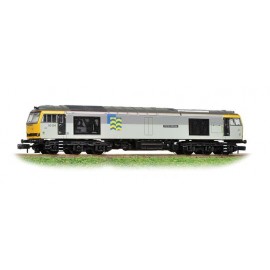Static grass puffer bottles work by manually charging model grass fibres with static electricity. When the charged...
No products
Product successfully added to your shopping cart
There are 0 items in your cart. There is 1 item in your cart.
Search Tips
What is a Class 60 locomotive?
The Class 60 is a heavy freight diesel-electric locomotive built for British Rail in the late 1980s and early 1990s. You'll recognise it as one of the most powerful diesel locomotives in the UK, designed specifically for hauling heavy bulk loads such as aggregates, oil and steel.
Built by Brush Traction, 100 of these locomotives were constructed between 1989 and 1993. Each is powered by a 3,100-horsepower Mirrlees engine, giving it impressive hauling capability. Compared to older diesel locomotives, the Class 60 was designed for efficiency and reliability, though it was somewhat overshadowed by the more numerous and versatile Class 66.
Initially, they were distributed across various freight operators following rail privatisation, with many going to EWS (now DB Cargo UK). Over time, some were withdrawn, but several remain in active service with companies like Colas Rail and GB Railfreight. Enthusiasts appreciate the Class 60 for its rugged design and distinctive, deep engine note.
Click here to receive the tips weekly in your mailbox. You can unsubscribe at any time.










